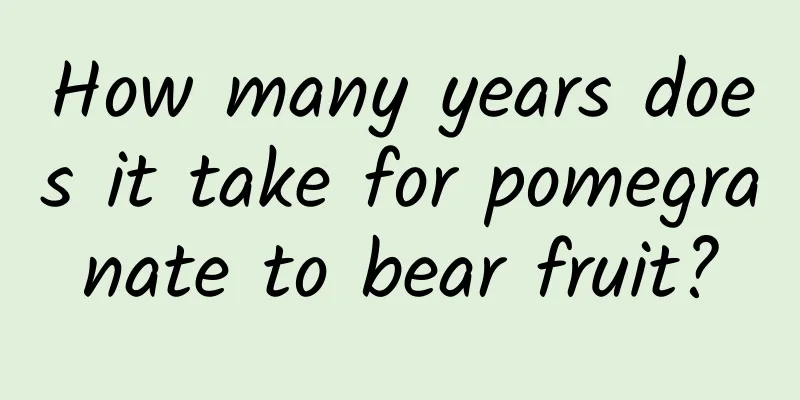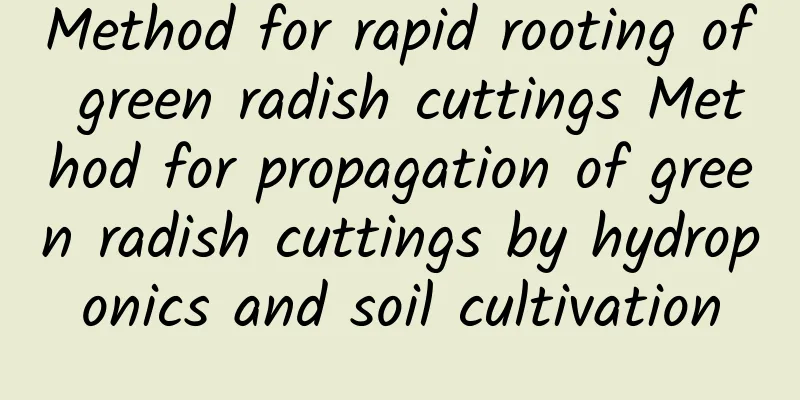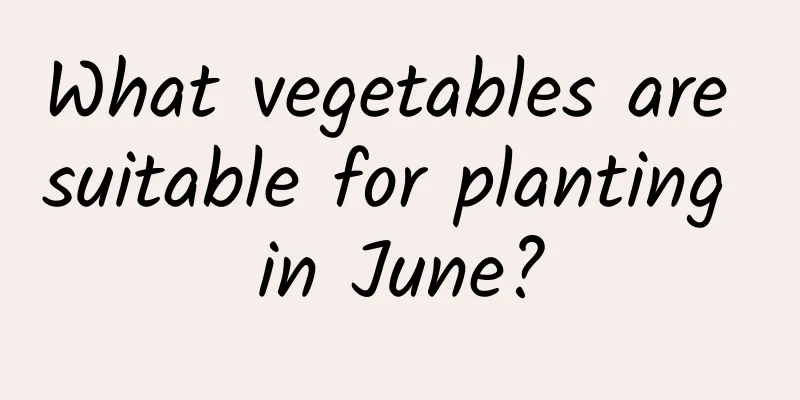How many years does it take for pomegranate to bear fruit?

Introduction to growing pomegranatesPomegranate is mainly distributed in areas with an altitude of 300 to 1000 meters. It likes warm and sunny environment and has a wide adaptability to soil, but it is best planted in loose, well-drained sandy soil. June is not suitable for planting pomegranate trees. It is best to transplant them about a week after the leaves fall in autumn, or in mid-March in spring. Pomegranate is widely distributed in China and is cultivated in both the north and the south. It is most widely distributed in Jiangsu and Henan, and its quality is also very high. In particular, the small-fruit pomegranate and crystal pomegranate cultivated in Jiangsu are both better varieties. There are many varieties of pomegranate, mainly including white pomegranate, yellow pomegranate, agate pomegranate, double-petal pomegranate, rose pomegranate, black pomegranate, Mengzi pomegranate, Huaiyuan pomegranate, Heyin pomegranate, Tunisian soft-seeded pomegranate, Huili pomegranate, Lintong pomegranate and other types. Tunisian soft-seeded pomegranate and Huangli pomegranate are the most famous. Pomegranate planting results after several yearsIf you plant it with pomegranate seeds, it will take about 6-8 years to bloom and bear fruit. If you use fruit-bearing pomegranate branches for high layering, it will only take 3-4 years to bloom and bear fruit. Remove the seeds from the pomegranate, then place it in clean water, wash the surface film, soak the seeds in clean water for about 6-10 days, then prepare the flower pots and loose soil, spray the soil, spread the seeds on it, they will take root and sprout in about 20-30 days, and then they can be transplanted. Why don't pomegranates bear fruit?If the pomegranate tree has been planted for about 5 years and still does not bear fruit, it is caused by poor management. It may be that diseases and pests are not controlled in time, the leaves fall off prematurely in autumn, or fertilizers are not applied in time, the tree stores insufficient nutrients, and flower buds are difficult to differentiate and bloom. Without flowers, there will be no fruit. Key points for high-yield cultivation of pomegranateLight: Attention should be paid to light and temperature during pomegranate maintenance. Full sunlight is required during the growth period. The more sunlight there is, the more flowers there are. A dry, sunny place is conducive to the formation of flower buds and flowering. A dark maintenance environment will cause the branches and leaves to grow too long, making it difficult to bloom. The suitable growth temperature is 15-20 degrees, and the winter temperature is below minus 18 degrees, otherwise it will be damaged by frost. Water and fertilizer: Pomegranates planted in the open field need to be re-fertilized with organic fertilizer once a year. Potted plants need to be repotted and adequate base fertilizer applied every 1-2 years. Top dressing should be done 3-5 times during the growing season. Attention should be paid to loosening the soil and weeding to maintain the moist state of the potting soil and prevent drought and waterlogging. |
<<: How many years does it take for an apple tree to bear fruit?
>>: When is the best time to plant lisianthus seeds?
Recommend
The main value of Dendrobium officinale
Medical value This is the most important function...
Cultivation methods and precautions of succulent sunset
The succulent sunset glow is not very difficult t...
What is the best fertilizer for carambola?
Fertilization time for carambola The base fertili...
The efficacy and function of desert rose
Medicinal effects: 1. Desert rose can be applied ...
How to water the money tree
Tips for watering money string Money tree belongs...
What to do if Mingyue root rots
Causes of root rot in Mingyue Poor air permeabili...
Is Guanyin Lotus poisonous?
Are all Alocasia odora from different families po...
When is the best month to plant cherry tomatoes?
When to plant cherry tomatoes Cherry tomatoes are...
How to dry daylily
Preparation for drying Before introducing the met...
How to grow mosquito repellent grass
1. Soil Mosquito repellent grass is a common name...
Huang Li's breeding methods and precautions
Huangli is a succulent plant with strong habits a...
Can the green radish be repotted in winter?
1. Is it possible? Unlike other plants, green rad...
The difference between Yunnan Paris polyphylla and Chinese Paris polyphylla
1. Differences in the stems The stem of Yunnan Pa...
The difference between miniature coconut and areca palm
1. Difference in appearance The miniature coconut...
How to grow sweet potatoes to achieve high yield?
Sweet potato , also known as sweet potato, yam or...









